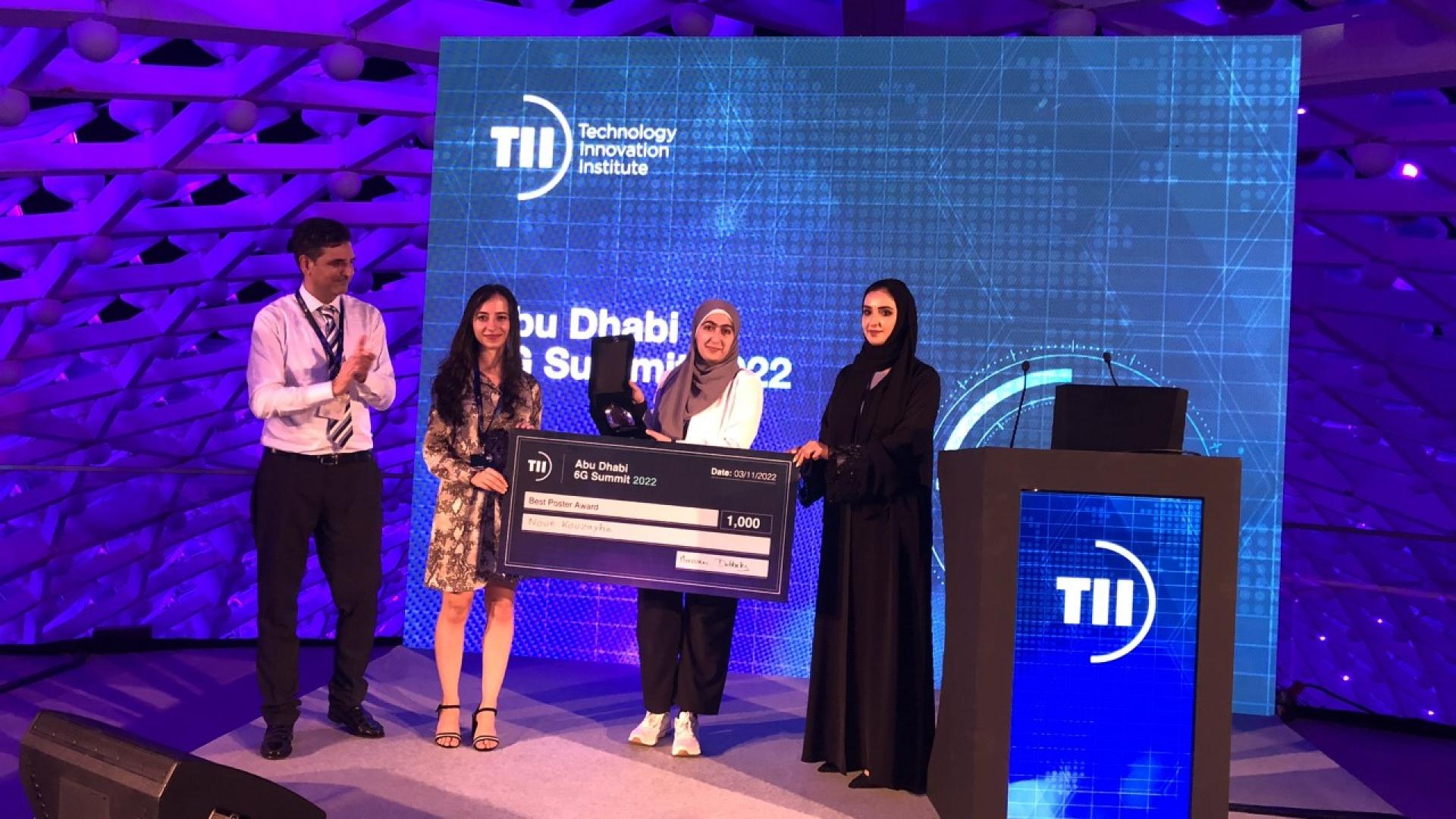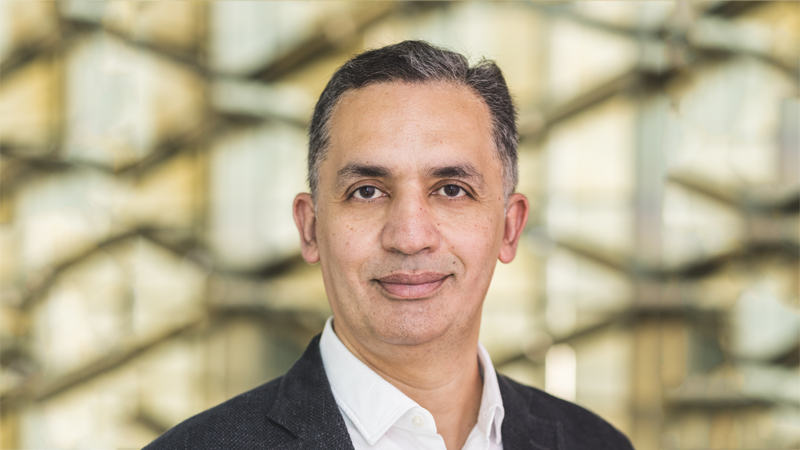By David Murphy
Nour Kouzayha, a postdoctoral research fellow based in the KAUST Information Science Lab (ISL), recently won the Best Poster Award at the Technology Innovation Institute’s (TII) Abu Dhabi 6G Summit 2022. Dr. Kouzayha received the award for her poster titled "Coverage and Mobility Analysis of Aerial Users in Integrated HAPS-Ground Wireless Networks."
The summit, held November 3-4, 2022, brought together global experts in wireless technology to promote local initiatives in the field and facilitate fruitful collaboration among leading institutions and companies.
The winning poster was based on research conducted by Kouzayha and her colleagues Hesham ElSawy, assistant professor at the School of Computing, Queen's University, Canada; Hayssam Dahrouj, associate professor at the electrical engineering department, University of Sharjah, UAE; and Tareq Al-Naffouri, professor of electrical and computer engineering, KAUST.
A key component of the researchers' efforts to bridge the digital divide is the development of new generations of integrated space-air-ground integrated networks (SAGIN) for sustainable wireless connectivity.
In their work, the researchers studied an integrated high-altitude platforms (HAPS)-ground wireless network in which HAPS provide cellular connectivity to mobile aerial users. More specifically, they focused on mobile aerial users (cargo drones) by highlighting the intertwining between the coverage performance and the mobility impact.
“To the best of our knowledge, this is the first work that studies the interdependency of connectivity and mobility of aerial users in integrated HAPS-ground networks and advises recommendations for optimal deployment,” Kouzayha emphasized.
“One of the key takeaways of our work is that the altitude at which the aerial user should fly is highly related to its velocity and that HAPS can assist terrestrial networks in mitigating the impact of mobility for aerial users.
“This theoretical study highlights a novel analytical assessment methodology using stochastic geometry to quantify the performance gains and trade-offs of using HAPS to maintain reliable aerial users. The obtained results can further optimize the performance of these applications,” she explained.
Advancing the next generation of wireless networks
The research work of the KAUST ISL is mainly interdisciplinary and draws upon tools from stochastic geometry, optimization theory, machine learning, signal processing and hardware design and implementation.
The integration of SAGIN—which incorporates satellites, HAPS and unmanned aerial vehicles (UAV)—is one of the most promising facilitators of sixth-generation (6G) wireless networks. By connecting to the cellular network, UAVs can provide many new services, such as aerial delivery fleets, cargo drones and flying cars.
A significant challenge for the extensive use of these applications remains, however, the aerial users’ high mobility. This increased mobility leads to frequent switching from one base station to another, or “handover.” Handovers introduce substantial delays that further deteriorate wireless connection quality by exchanging more signaling information. In turn, these handover events significantly increase the energy consumption of aerial users, which frequently suffer from limited battery capabilities.
“At the ISL, we are all united in our shared objective to accomplish pioneering research that advances the next generations of wireless networks and technologies,” she noted.
Supporting a pioneering interdisciplinary drive
Kouzayha’s research focuses on the modeling, design, optimization and performance analysis of wireless systems with a current emphasis on global connectivity, integrated space-air-ground wireless networks and underwater communication. More specifically, she develops fundamental mathematical frameworks and principles using stochastic geometry to model wireless networks and obtains tractable expressions describing the quality of service and performance metrics.
She is currently working on analyzing and optimizing reconfigurable intelligent surfaces (RIS) for terahertz (THz) communication systems; namely, using RIS to mitigate THz communications' coverage limitations. THz communications are mandatory to push data rates from Gigabits per second to Terabits per second and to support new applications, such as virtual and augmented reality, with high quality-of-service.
Another of her ongoing projects involves using UAVs to design energy-efficient solutions for terrestrial and maritime Internet of Things (IoT) systems. In this project, Kouzayha and her KAUST ISL colleagues presented a theoretical study and a demonstration of a smart agriculture solution.
Regarding her 6G Summit award win, she noted: “It feels great to receive such wonderful recognition for our ideas and work. It also gave us tremendous encouragement to further advance this particular project.
“I would like to thank Prof. Al-Naffouri, Dr. ElSawy and Dr. Dahrouj for their continuous support. I am very grateful to be a researcher at KAUST; it has provided me with a great environment to conduct cutting-edge research in wireless communications.”


